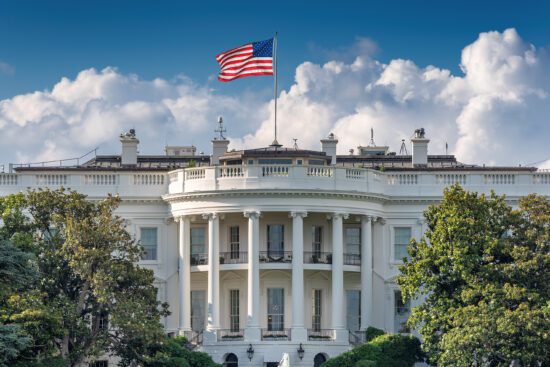William Bennett and Robert White have written a very helpful, practical refutation of the marijuana legalization effort, and it could hardly be timelier. In less than 200 pages of very accessible text, Going to Pot: Why the Rush to Legalize Marijuana is Harming America (Hachette Book Group), released in February, effectively dismantles every serious argument being put forward by the legalization crowd. Bennett, a former secretary of education and first director of the National Drug Control Policy office, and White, an attorney, begin with the central, most important argument in the secular debate—whether or not marijuana use is dangerous.
Bennett and White write from a social science perspective. There are important spiritual reasons to oppose the use of marijuana, as well. Scripture teaches clearly that sobriety and self-control are hallmarks of healthy Christian discipleship. Bennett and White are not working in that space, however. They argue, convincingly, that legalization of marijuana for medical or recreational purposes will lead to more personal and social problems, not only for users but for society as a whole. Marijuana use, they emphasize, is a threat to the individual and the nation. It is everyone’s concern. Consequently, this is a book for everyone.
The authors make their case in a very straightforward, matter-of-fact way. There are stories, but not long emotional appeals. They also pepper their book with letters and notes they have received over the years from people whose lives have been turned upside down by marijuana. However, this is principally a book of facts. The writers want to win this debate with facts, and they do this effectively. They provide page after page of facts about the problems associated with both medical and recreational marijuana.
Bennett and White roundly dispel the medical marijuana myth with this book. They skewer the arguments made about the place marijuana currently plays in alleviating real suffering. While acknowledging sympathy for people with medical needs, they point out that the vast majority of those who are claiming the need for medical marijuana in Arizona, for example, are men between the ages of 18 and 30 years old. Only 13 percent of medical marijuana cardholders in Arizona are over 60. In other words, the very group most likely to be using marijuana to get high also happens to be the group using marijuana for supposed pain issues. They even note that medical marijuana cards are being issued to children under the age of 18.
Not wanting to be taken as heartless, the authors acknowledge the potential benefit marijuana might pose to a narrow range of health issues. In order to make the drug available to those who might truly benefit from it, they offer a “modest proposal” for the use of medicinal marijuana. They suggest 10 criteria for this regimen. If our country insists on pursuing this path, their proposal, at least, provides some important accountability from government, doctors, and patients.
I agree that we should help those suffering from various health challenges find relief. I do not believe marijuana is very effective for pain relief, however. The evidence is clear on this, as well. Most people who use marijuana to deal with significant pain also take other pain relief drugs because marijuana is not that effective in alleviating pain on its own. On the other hand, if marijuana will actually provide some real help for some specific health challenges more effectively than the many other drugs that are already available, I am not opposed to its use, either. The current no-holds barred approach is just plain reckless and irresponsible, though. The entire current approach to medical marijuana must be addressed, because it is out of control. Bennett and White offer some helpful guidance forward on this front.
The medical marijuana debate is really just a stop along the way to recreational use of the drug. This is where Bennett and White spend most of their time. They go straight for the jugular in their chapter on legalization and its effects. They work through the long list of problems created by marijuana legalization, and back up every claim with facts. For example, they address the long list of negative consequences of smoking marijuana, including the impact on the lungs, brain development in adolescents, IQ loss, psychosis, judgment, coordination, motor skills, and the heart. They also note the practice of packaging marijuana in bright, colorful wrappers that makes it look more like candy than a supposed drug. The result is that children are finding these products and eating them, without realizing they are consuming marijuana.
Bennett and White also discuss the social costs of greater accessibility to marijuana. They note that greater use will result in such things as more crime, more auto accidents, more deaths, more addiction, more overdoses, as well as greater loss of productivity in the workplace and increased emergency room visits. They rightly claim that the supposed benefits to society of legalization are also vastly overestimated. They observe that tax revenues will not spike significantly, the drug cartels will not be put out of business, and law enforcement will simply find its time diverted to policing the impact of greater legal drug use.
For those wondering how to respond to the various arguments being made to advance the marijuana legalization effort, the authors offer some very helpful commentary. They provide, for example, a brief snapshot of the failure of marijuana legalization internationally. Every country with a long enough record of legalized marijuana to study has demonstrated the leap toward legalization was a bad decision. Most are already working to rein it in. The authors also help the reader respond to claims that marijuana is not as deadly as alcohol, and that marijuana is not addictive. There is also helpful argumentation on the gateway nature of marijuana and refutation of libertarian arguments for legalization.
Wrapping things up, the authors provide helpful guidance for a successful return to a government program to reduce illicit drug use rather than capitulation. They propose a partnership between government and civil society that would produce a full court press to restore the stigmatization of drugs in society. Their proposals are offered only in summary form and require significant fleshing out, but their recognition that our country is failing our youth through its lack of deterrence is right on target. Every facet of society must coalesce around the effort to reclaim the message that drugs, including marijuana, destroy lives.
In their conclusion, the authors challenge readers to examine the facts for themselves rather than simply accepting what they are told. “Almost every argument on behalf of legalization,” they conclude, “has a better countervailing argument.” I share their confidence, with one distinction. I would qualify the word “almost” so that it applies only to possible uses of marijuana for a very narrow range of medicinal uses. In the end, there are no good arguments for legalizing marijuana for recreational purposes and only a narrow range of possible arguments for its medicinal value. Following their conclusion, Bennett and White offer some helpful materials in an appendix, including the complete text of a 2014 New England Journal of Medicine article entitled “Adverse Health Effects of Marijuana Use.”
Going to Pot is a serious volume, written by serious men, in an approachable format. I agree completely with their last words: “This argument is, after all, about our most precious and valuable assets: the health and well-being of our children and our country.” We must do all we can to protect both. As one whose life was nearly destroyed by drug use as a teenager and young adult, I urge everyone who wants to understand the issues in the debate about marijuana to read this important fresh look at the misguided leap toward the legalization of marijuana.










